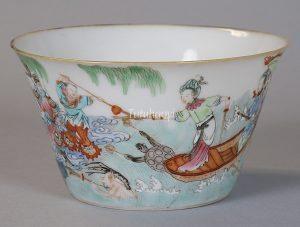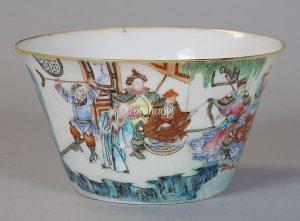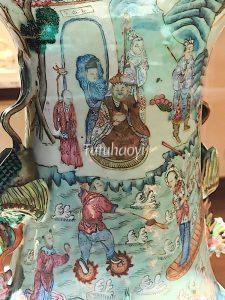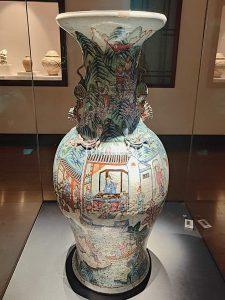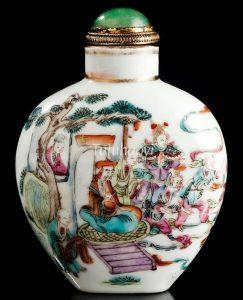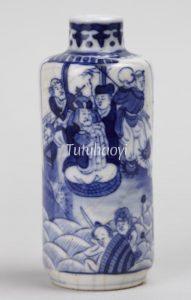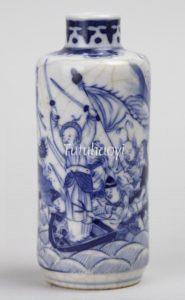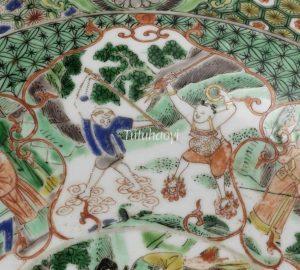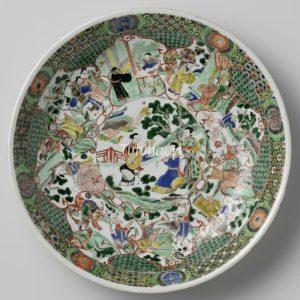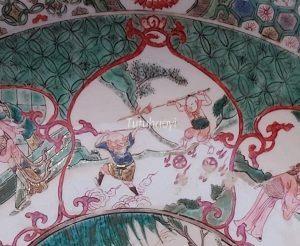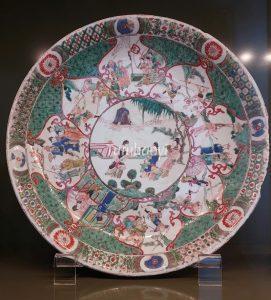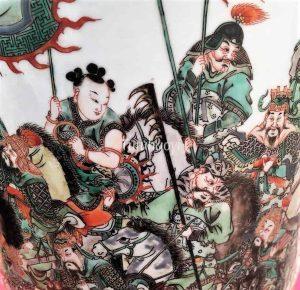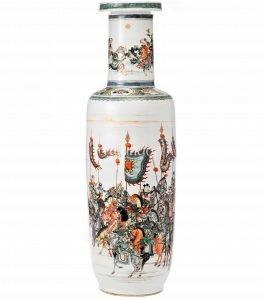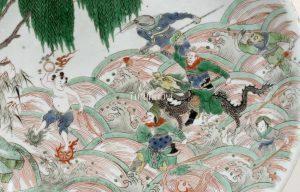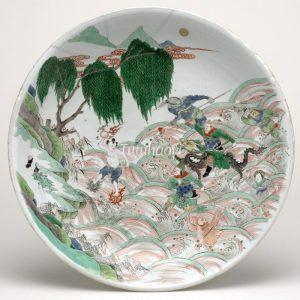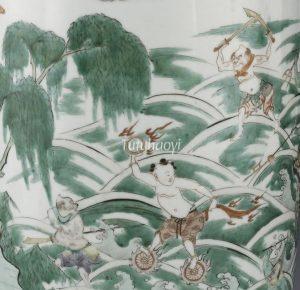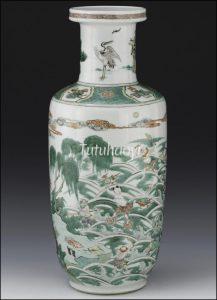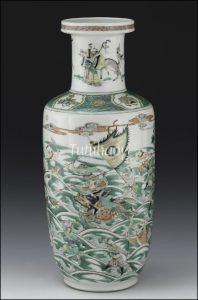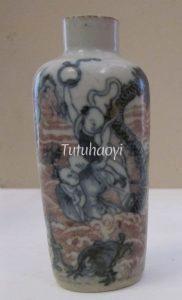Nezha
哪吒
© Tutuhaoyi.com owns the copyright of the description content for the images attached. Quoting all or part of the description content on this page is permitted ONLY IF ‘Tutuhaoyi.com’ is clearly acknowledged anywhere your quote is produced unless stated otherwise. (本页描述内容版权归Tutuhaoyi.com所有,转发或引用需注明 “Tutuhaoyi.com”, 侵权必究, 已注开源信息的条目除外。)
Nezha (哪吒) is a legendary warrior deity in Chinese mythology, known for his rebellious spirit, supernatural abilities, and deep connections to Daoist and Buddhist traditions. His earliest roots can be traced to Buddhist texts, where he appears as a guardian under Vaiśravaṇa, the Heavenly King (多闻天王, Duowen Tianwang). Over time, his story evolved, and by the Song and Yuan dynasties, he had become a distinctly Chinese figure. Daoist traditions reshaped his legend, portraying him as a youthful hero who defied fate, sacrificed himself, and was reborn through divine intervention.
Nezha’s presence in Chinese folklore extends beyond his well-known battles in Investiture of the Gods and Journey to the West. He also played a role in the Legend of the White Snake, where he assisted Abbot Fahai in defending Jinshan Temple against Bai Suzhen. Antique paintings and porcelain pieces provide visual evidence of this connection, capturing scenes of his intervention alongside the monk (see Figs. 1–7). His presence in this folktale reinforces his image as a divine warrior upholding cosmic order.
During the Ming dynasty, Nezha’s myth took on new dimensions. Wu Cheng’en (吴承恩)’s Journey to the West (西游记, Xi You Ji) depicts him as a formidable warrior, the son of Li Jing, engaging in fierce battles, including one with Sun Wukong, the Monkey King (see Figs. 8–11). Yet it was Xu Zhonglin (许仲琳)’s Investiture of the Gods (封神演义, Fengshen Yanyi) that cemented his legendary status. In this epic, he fights alongside Jiang Ziya, aiding King Wu in his campaign to overthrow the Shang dynasty (see Figs. 12–13). His famous exploits, including his battle with Ao Bing, the Dragon King’s son, are vividly depicted in artworks that illustrate his defiance of authority and mastery of divine weaponry (see Figs. 14–19). His origin story became one of the most dramatic in Chinese mythology—born from a ball of flesh, mentored by Taiyi Zhenren (太乙真人), and ultimately sacrificing his mortal body to escape his father’s wrath. His act of stripping off his flesh and bones, followed by his rebirth in a lotus form, remains a powerful symbol of defiance, renewal, and spiritual transcendence.
Crucially, Nezha’s iconic weapons are detailed: the Fire-tipped Spear (火尖枪, Huo Jian Qiang), Wind Fire Wheels (风火轮, Feng Huo Lun), Universe Ring (乾坤圈, Qian Kun Quan), and the Red Armillary Sash (混天绫, Hun Tian Ling) which is a magical cloth used to control water and cause disruption.
Nezha’s portrayal as a powerful child warrior, embodying courage and justice, has made him a beloved figure in Chinese culture. In later traditions, particularly in southern China and among overseas Chinese communities, he is also venerated as a protector of seafarers and children. His journey reflects the interplay of religious and cultural influences, shaping a character whose legacy endures.
literature research and story scene description by Rachel Ma
Fig 1-2: famille rose porcelain cup, first half 19th century, courtesy of the Metropolitan Museum of Art, New York
Fig 3-4: famille rose porcelain standing bottle, 19th century, Qing dynasty, courtesy of Wuhan Museum, Hubei Province, China, photo: Rachel Ma
Fig 5: famille rose porcelain snuff bottle, second half 19th century, courtesy of Bonhams Auction House, Hongkong, 28 November 2011, Lot 311
Fig 6-7: porcelain snuff bottle with underglaze blue decoration, Qing dynasty (1644–1911), courtesy of Princeton University Art Museum
Fig 8-9: porcelain dish with overglaze enamelled decoration, Kangxi period (1662–1722), Qing dynasty, courtesy of the Rijksmuseum, Amsterdam
Fig 10-11: porcelain dish with overglaze enamelled decoration, Kangxi period (1662–1722), Qing dynasty, courtesy of Munich Residence Museum, photo: Jason Ooi
Fig 12-13: famille verte rouleau vase, Kangxi period (1662–1722), Qing dynasty, courtesy of the previous Jie Rui Tang Collection
Fig 14-15: famille verte porcelain saucer dish, Kangxi period (1662–1722), Qing dynasty, courtesy of the Trustees of the British Museum
Fig 16-18: famille verte porcelain vase, Kangxi period (1662–1722), Qing dynasty, courtesy of the Shanghai Museum, China
Fig 19: porcelain snuff bottle with underglaze blue and red decoration, Qing dynasty (1644–1911), courtesy of Bonhams Auction House, New York, 2 October 2012, Lot 1252
